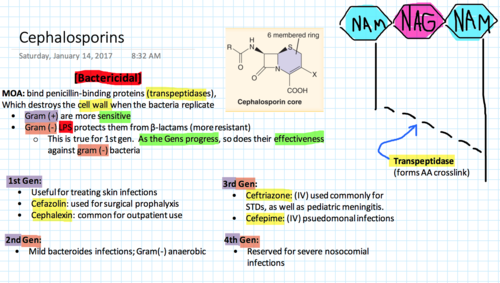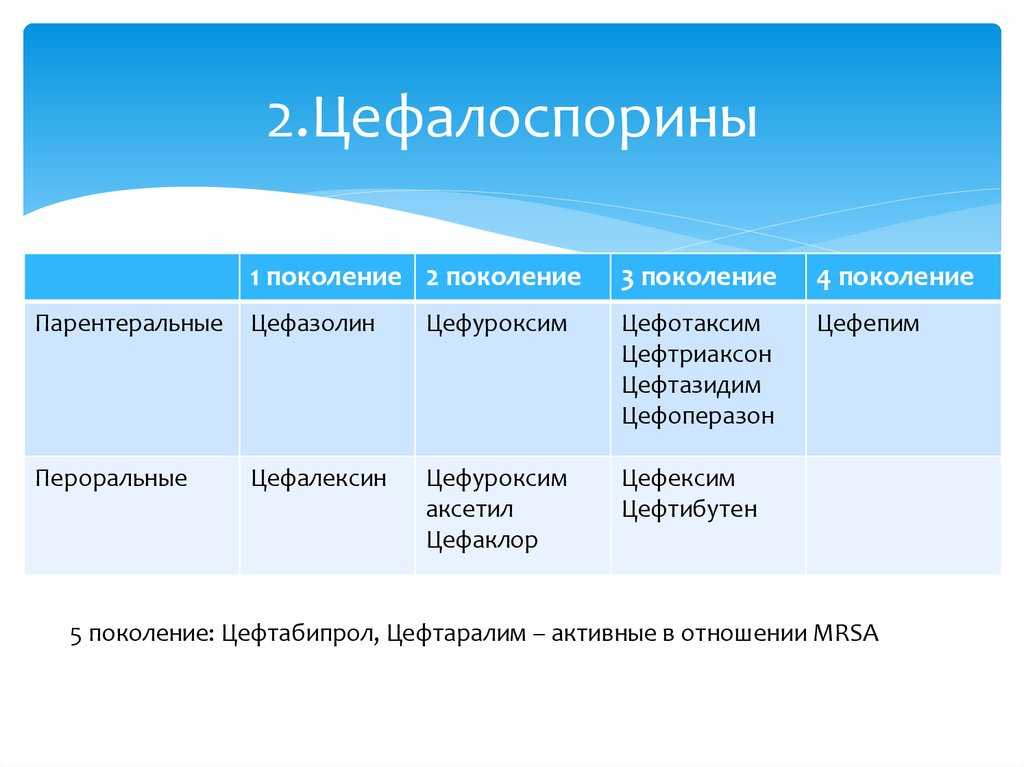Cephalosporin brand name. Cephalosporins: A Comprehensive Guide to Antibiotic Classes and Generations
What are cephalosporins. How do cephalosporins work. What are the different generations of cephalosporins. What are common brand names for cephalosporin antibiotics. What are the main indications for using cephalosporins. What are potential side effects of cephalosporins.
Understanding Cephalosporins: An Overview of This Important Antibiotic Class
Cephalosporins are a widely used class of antibiotic medications that play a crucial role in treating various bacterial infections. These broad-spectrum antibiotics belong to the beta-lactam family and work by interfering with bacterial cell wall synthesis. Since their discovery in the 1940s, cephalosporins have evolved through multiple generations, each with expanded antimicrobial coverage and improved pharmacological properties.
How do cephalosporins work?
Cephalosporins exert their bactericidal effects by binding to penicillin-binding proteins (PBPs) in bacterial cell walls. This interaction disrupts the cell wall synthesis process, ultimately leading to bacterial cell lysis and death. Unlike penicillins, cephalosporins are resistant to penicillinase enzymes, making them effective against many penicillin-resistant bacteria. However, they may still be susceptible to other types of beta-lactamases, such as extended-spectrum beta-lactamases (ESBLs).

The Cephalosporin Generations: From First to Fifth
Cephalosporins are classified into five generations based on their spectrum of activity and resistance to beta-lactamases. Each subsequent generation generally offers broader coverage against gram-negative bacteria while maintaining or slightly reducing activity against gram-positive organisms.
First-generation cephalosporins
First-generation cephalosporins have excellent activity against gram-positive cocci and moderate activity against some gram-negative rods. They are commonly used for skin and soft tissue infections, upper respiratory tract infections, and surgical prophylaxis.
- Oral agents: Cephalexin (Keflex), Cefadroxil (Duricef)
- Parenteral agents: Cefazolin (Ancef, Kefzol)
Second-generation cephalosporins
Second-generation cephalosporins offer improved gram-negative coverage while maintaining good activity against gram-positive bacteria. They are often used to treat respiratory tract infections, urinary tract infections, and intra-abdominal infections.

- Oral agents: Cefuroxime axetil (Ceftin), Cefaclor (Ceclor)
- Parenteral agents: Cefotetan (Cefotan), Cefoxitin (Mefoxin), Cefuroxime (Zinacef)
Third-generation cephalosporins
Third-generation cephalosporins have significantly expanded gram-negative coverage, including many Enterobacteriaceae and Pseudomonas aeruginosa. They are commonly used for more severe infections, such as meningitis, septicemia, and hospital-acquired pneumonia.
- Oral agents: Cefixime (Suprax), Cefdinir (Omnicef)
- Parenteral agents: Ceftriaxone (Rocephin), Cefotaxime (Claforan), Ceftazidime (Fortaz, Tazicef)
Fourth-generation cephalosporins
Fourth-generation cephalosporins offer the broadest spectrum of activity, with excellent coverage against both gram-positive and gram-negative bacteria. They are often reserved for severe, multidrug-resistant infections.
- Parenteral agents: Cefepime (Maxipime), Cefpirome (Cefrom)
Fifth-generation cephalosporins
The newest generation of cephalosporins includes agents with activity against methicillin-resistant Staphylococcus aureus (MRSA) and other resistant organisms.

- Parenteral agents: Ceftaroline (Teflaro), Ceftobiprole
Common Indications for Cephalosporin Use
Cephalosporins are prescribed for a wide range of bacterial infections, depending on the specific agent and its spectrum of activity. Some common indications include:
- Skin and soft tissue infections
- Respiratory tract infections (e.g., pneumonia, bronchitis)
- Urinary tract infections
- Intra-abdominal infections
- Meningitis
- Septicemia
- Bone and joint infections
- Surgical prophylaxis
Pharmacokinetics and Administration of Cephalosporins
Cephalosporins are available in various formulations for oral and parenteral administration. Most cephalosporins are primarily eliminated through renal excretion, necessitating dose adjustments in patients with impaired kidney function.
Oral cephalosporins
Oral cephalosporins, such as cephalexin and cefuroxime axetil, are absorbed from the gastrointestinal tract and distributed throughout the body. They typically have good bioavailability and can be taken with or without food, depending on the specific agent.

Parenteral cephalosporins
Parenteral cephalosporins are administered intravenously or intramuscularly, allowing for rapid and complete distribution throughout the body. Some agents, like ceftriaxone, have long half-lives that permit once-daily dosing.
Potential Side Effects and Precautions
While generally well-tolerated, cephalosporins can cause various side effects and adverse reactions. Healthcare providers should be aware of these potential issues when prescribing these antibiotics.
Common side effects
- Gastrointestinal disturbances (nausea, vomiting, diarrhea)
- Headache
- Dizziness
- Rash or itching
Serious adverse reactions
- Hypersensitivity reactions (including anaphylaxis)
- Clostridioides difficile-associated diarrhea
- Nephrotoxicity (rare, more common with certain agents)
- Hematologic effects (e.g., neutropenia, thrombocytopenia)
Cross-reactivity with penicillins
Patients with a history of immediate hypersensitivity reactions to penicillins may be at increased risk of cross-reactivity with cephalosporins. The estimated cross-reactivity rate is approximately 1-3%, lower than previously thought. However, caution is still warranted when prescribing cephalosporins to patients with penicillin allergies.

Antibiotic Resistance and Cephalosporins
The emergence of antibiotic-resistant bacteria poses a significant challenge to the effectiveness of cephalosporins and other antibiotics. Several mechanisms of resistance have been identified:
- Production of extended-spectrum beta-lactamases (ESBLs)
- AmpC beta-lactamase production
- Carbapenemase production
- Alterations in penicillin-binding proteins
- Reduced permeability of the bacterial outer membrane
To combat antibiotic resistance, healthcare providers should adhere to appropriate prescribing practices, including:
- Using cephalosporins only when clinically indicated
- Selecting the narrowest spectrum agent effective against the suspected pathogen
- Prescribing the correct dose and duration of therapy
- Considering local resistance patterns when choosing empiric therapy
Future Directions in Cephalosporin Development
As antibiotic resistance continues to evolve, researchers are working on developing new cephalosporins and combination therapies to address emerging challenges. Some areas of focus include:

- Novel cephalosporin-beta-lactamase inhibitor combinations
- Cephalosporins with activity against multidrug-resistant gram-negative bacteria
- Agents with improved central nervous system penetration
- Cephalosporins with enhanced activity against difficult-to-treat pathogens, such as Pseudomonas aeruginosa and Acinetobacter baumannii
These ongoing research efforts aim to ensure that cephalosporins remain a valuable tool in the fight against bacterial infections for years to come.
Cephalosporins in Special Populations
When prescribing cephalosporins, healthcare providers must consider special populations that may require dose adjustments or alternative therapies.
Pediatric patients
Many cephalosporins are safe and effective in children, with dosing based on weight or body surface area. Some agents, like ceftriaxone, have been extensively studied in pediatric populations and are commonly used to treat serious infections in children.
Pregnant and breastfeeding women
Most cephalosporins are considered safe during pregnancy and breastfeeding, with many classified as FDA Pregnancy Category B. However, the potential risks and benefits should always be carefully evaluated for each patient.
:max_bytes(150000):strip_icc()/antibiotics2-56a26e825f9b58b7d0ca3e95.jpg)
Patients with renal impairment
Since cephalosporins are primarily excreted by the kidneys, dose adjustments are often necessary for patients with renal impairment. The specific adjustments depend on the drug and the degree of renal dysfunction.
Elderly patients
Older adults may be more susceptible to adverse effects of cephalosporins, particularly those with reduced renal function. Careful monitoring and dose adjustments may be necessary in this population.
In conclusion, cephalosporins remain a cornerstone of antibiotic therapy, offering broad-spectrum coverage for various bacterial infections. Their evolution through multiple generations has expanded their utility in clinical practice. However, judicious use is essential to preserve their effectiveness and minimize the development of antibiotic resistance. Healthcare providers should stay informed about the latest developments in cephalosporin research and resistance patterns to optimize patient care and antibiotic stewardship efforts.

Cephalosporins – SourceWatch
WARNING! Sewage sludge is toxic. Food should not be grown in “biosolids.” Join the Food Rights Network. |
Cephalosporins are a type of antibiotic pharmaceuticals.
Cephalosporins include the following drugs:[1]
First Generation
- Cefacetrile (Brand names: Celospor, Celtol, Cristacef)
- Cefadroxil (cefadroxyl) (Brand names: Duricef, Ultracef)
- Cefalexin (cephalexin) (Brand names: Keflex, Keftab)
- Cefaloglycin (cephaloglycin) (Brand name: Kefglycin)
- Cefalonium (cephalonium)
- Cefaloridine (cephaloradine)
- Cefalotin (cephalothin) (Brand name: Keflin)
- Cefapirin (cephapirin) (Brand name: Cefadyl)
- Cefatrizine
- Cefazaflur
- Cefazedone
- Cefazolin (cephazolin) (Brand name: Ancef, Kefzol)
- Cefradine (cephradine) (Brand name: Velosef)
- Cefroxadine
- Ceftezole
Second Generation
- Cefaclor (Brand names: Ceclor, Ceclor CD, Distaclor, Keflor, Ranicor)
- Cefamandole (Brand name: Mandol)
- Cefmetazole
- Cefonicid (Brand name: Monocid)
- Cefotetan (Brand name: Cefotan)
- Cefoxitin (Brand name: Mefoxin)
- Cefprozil (cefproxil) (Brand name: Cefzil)
- Cefuroxime (Brand name: Ceftin, Kefurox, Zinacef, Zinnat)
- Cefuzonam
Third Generation
- Cefcapene
- Cefdaloxime
- Cefdinir (Brand names: Omnicef, Cefdiel)
- Cefditoren (Brand name: Spectracef)
- Cefetamet
- Cefixime (Brand name: Suprax)
- Cefmenoxime (Brand name: Cefmax
- Cefodizime
- Cefotaxime (Brand name: Claforan)
- Cefpimizole
- Cefpodoxime (Brand name: Vantin)
- Cefteram
- Ceftibuten (Brand name: Cedax
- Ceftiofur (Brand name: Excede
- Ceftiolene
- Ceftizoxime (Brand name: Cefizox)
- Ceftriaxone (Brand name: Rocephin)
- Cefoperazone (Brand name: Cefobid)
- Ceftazidime (Brand names: Ceptaz, Fortum, Fortaz, Tazicef, Tazidime)
Fourth Generation
- Cefclidine
- Cefepime (Brand name: Maxipime)
- Cefluprenam
- Cefoselis
- Cefozopran
- Cefpirome (Brand name: Cefrom)
- Cefquinome
Not Classified
- Cefaclomezine
- Cefaloram
- Cefaparole
- Cefcanel
- Cefedrolor
- Cefempidone
- Cefetrizole
- Cefivitril
- Cefmatilen
- Cefmepidium
- Cefovecin
- Cefoxazole
- Cefrotil
- Cefsumide
- Ceftaroline
- Ceftioxide
- Cefuracetime
Contents
- 1 Articles and resources
- 1.
 1 Related SourceWatch articles
1 Related SourceWatch articles - 1.2 References
- 1.3 External resources
- 1.4 External articles
- 1.
Articles and resources
Related SourceWatch articles
- Biosolids
- Sewage sludge
- Food Rights Network
- Pharmaceuticals
References
- ↑ List of Antibiotics, Accessed August 28, 2010
External resources
External articles
| This article is a stub. You can help by expanding it. |
cephalosporins [TUSOM | Pharmwiki]
All Cephalosporins
Bactericidal
Bind to Penicillin Binding Proteins
Resistant to Penicillinase, but not other classes of β-lactamases (e.g. Extendend Spectrum Beta-Lacatamases or ESBLs)
Renal excretion
Side Effects
Hypersensitivity reactions (Cross-hypersensitivity with penicillins 1-3%)
Superinfections: Enterococci, Enterobacter and Candida
THE CEPHALOSPORIN FAMILY
| THE CEPHALOSPORINS | ||
|---|---|---|
| CATEGORY | PARENTERAL AGENTS | ORAL AGENTS |
| First Generation | Cefazolin | Cephalexin |
| Second Generation | Cefotetan, Cefoxitin, Cefuroxime | Cefuroxime axetil, Cefaclor |
| Third Generation | Cefotaxime, Ceftazidime, Ceftriaxone | Cefixime, Cefdinir |
| Fourth Generation | Cefepime | |
| Fifth Generation | Ceftaroline | |
Generational Coverage
| Generation | Gram Negatives | Gram Positives | β-Lactamase Stability |
|---|---|---|---|
| 1st | + | +++ | +/- |
| 2nd | ++ | ++ | + |
| 3rd | +++ | + | ++ |
| 4th | +++ | ++ | +++ |
| 5th | +++ | +++ | ++++ |
Note: There are generational shifts from gram-positive to gram-negative coverage & resistance to β-lactamases.
1st Gen Cephalosporin Coverage & Indications
Cefazolin – iv
Cephalexin – po
Spectrum
Gram Positive Cocci, including MSSA (Does NOT cover Enterococcus)
Gram Negative Rods
No CNS penetration
Coverage
MSSA
Streptococci Grp A,B,C,G
Strep viridans
S. pneumoniae
H. influenzae
E. coli
Klebsiella pneumoniae
Proteus mirabilis
Common Uses
Skin & Soft Tissue Infections (SSTI)
Upper Respiratory Tract Infections
Surgical Prophylaxis
Keywords
Cephalexin
Trade Names: generic, Keflex ®
Drug Class: Cephalosporin 1st generation (oral)
Mechanism of Action:
Indications:
See 1st Gen Coverage & Uses
Side Effects:
hypersensitivity
Pharmacokinetics:
orally effective, renal clearance.

References:
Beauduy CE, Winston LG (2021): Beta-Lactam & Other Cell Wall- & Membrane-Active Antibiotics (Chapter 43). In: Basic and Clinical Pharmacology. 15th Ed. Katzung BG, Vanderah TW (Editors). McGraw-Hill / Lange.
rxlist.com (Keflex ®)
Keywords
Cefazolin
Trade Names: generic, Kefzol, Ancef ®
Drug Class: Cephalosporin 1st generation (parenteral: iv or im)
Indications:
Same spectrum of activity as cephalexin
See 1st Gen Coverage & Uses
Pharmacokinetics:
References:
Bartlett JG, Auwaerter PG, Pham PA (2010): The Johns Hopkins ABX Guide. Diagnosis and Treatment of Infectious Diseases. 2010 2nd Edition. Jones & Bartlett Publishers, Sudbury MA.
 (ISBN: 978-0-7637-8108-8)
(ISBN: 978-0-7637-8108-8)Beauduy CE, Winston LG (2021): Beta-Lactam & Other Cell Wall- & Membrane-Active Antibiotics (Chapter 43). In: Basic and Clinical Pharmacology. 15th Ed. Katzung BG, Vanderah TW (Editors). McGraw-Hill / Lange.
rxlist.com (Cefazolin ®)
Keywords
2nd Gen Cephalosporin Coverage & Indications
Cefuroxime – iv or po
Cefaclor – po
Cefoxitin – iv
Cefotetan – iv (MMT)
Half life = 1hr (except Cefotetan = 4 hrs)
Coverage
Same as 1st Generation Plus:
β-lactamase positive H. influenzae
Moraxella catarrhalis
Neisseria meningitidis
E. coli
Klebsiella pneumoniae
Proteus
Oral anaerobes
Cefoxitin & Cefotetan cover B.
 fragilis
fragilis
Holes in Coverage
Common Uses
Community Acquired Pneumonia
Bronchitis, Sinusitis, Otitis
Skin & Soft Tissue Infections (SSTI)
MSSA
Abdominal Surgical Prophylaxis
Cefoxitin or Cefotetan can be used as monotherapy of mild intra-abdominal & pelvic infections
Cefuroxime
Covers pneumococcus & H. influenzae
Community Acquired Pneumonia, Sinusitis & Otitis
Does NOT cover gut anaerobes
Keywords
Cefaclor
Trade Names: generic, Ceclor ®
Drug Class: Cephalosporin 2nd generation (oral)
Indications:
See 2nd Gen Coverage & Uses
Pharmacokinetics:
oral absorption, renal clearance
References:
Bartlett JG, Auwaerter PG, Pham PA (2010): The Johns Hopkins ABX Guide.
 Diagnosis and Treatment of Infectious Diseases. 2010 2nd Edition. Jones & Bartlett Publishers, Sudbury MA. (ISBN: 978-0-7637-8108-8)
Diagnosis and Treatment of Infectious Diseases. 2010 2nd Edition. Jones & Bartlett Publishers, Sudbury MA. (ISBN: 978-0-7637-8108-8)Beauduy CE, Winston LG (2021): Beta-Lactam & Other Cell Wall- & Membrane-Active Antibiotics (Chapter 43). In: Basic and Clinical Pharmacology. 15th Ed. Katzung BG, Vanderah TW (Editors). McGraw-Hill / Lange.
rxlist.com (Ceclor ®)
Keywords
Cefotetan
Trade Names: generic
Drug Class: Cephalosporin 2nd generation (parenteral)
Indications:
See 2nd Gen Coverage & Uses
Pharmacokinetics:
parenteral absorption, renal clearance
Major drug interactions:
The methylthiotetrazole ring of some cephalosporins (cefamandole, cefotetan, cefmetazole, and cefoperazone) may cause severe disulfiram-like reactions; so alcohol and medications containing alcohol should be avoided.

References:
Bartlett JG, Auwaerter PG, Pham PA (2010): The Johns Hopkins ABX Guide. Diagnosis and Treatment of Infectious Diseases. 2010 2nd Edition. Jones & Bartlett Publishers, Sudbury MA. (ISBN: 978-0-7637-8108-8)
Beauduy CE, Winston LG (2021): Beta-Lactam & Other Cell Wall- & Membrane-Active Antibiotics (Chapter 43). In: Basic and Clinical Pharmacology. 15th Ed. Katzung BG, Vanderah TW (Editors). McGraw-Hill / Lange.
rxlist.com (Cefotetan)
Clinical Pharmacology. 13e. Katzung BG, Masters SB, Trevor AJ (Editors). McGraw-Hill / Lange.
== Keywords ==
Cefoxitin
Trade Names: Mefoxin ®
Drug Class: Cephalosporin 2nd generation (parenteral)
Mechanism of Action:
Similar to penicillin
Increased activity against Gram negative bacilli and greater stability against beta-lactamase inactivation
Indications:
See 2nd Gen Coverage & Uses
Pharmacokinetics:
parenteral, injection, renal clearance
References:
Bartlett JG, Auwaerter PG, Pham PA (2010): The Johns Hopkins ABX Guide.
 Diagnosis and Treatment of Infectious Diseases. 2010 2nd Edition. Jones & Bartlett Publishers, Sudbury MA. (ISBN: 978-0-7637-8108-8)
Diagnosis and Treatment of Infectious Diseases. 2010 2nd Edition. Jones & Bartlett Publishers, Sudbury MA. (ISBN: 978-0-7637-8108-8)Beauduy CE, Winston LG (2021): Beta-Lactam & Other Cell Wall- & Membrane-Active Antibiotics (Chapter 43). In: Basic and Clinical Pharmacology. 15th Ed. Katzung BG, Vanderah TW (Editors). McGraw-Hill / Lange.
rxlist.com (Mefoxin ®)
Keywords
Cefuroxime
Trade Name: Cefuroxime, Cefuroxime axetil (Ceftin ®)
Drug Class: Cephalosporin 2nd generation (oral or parenteral)
Indications:
Axetil ester form used for oral administration.
See 2nd Gen Coverage & Uses
Pharmacokinetics:
References:
Bartlett JG, Auwaerter PG, Pham PA (2010): The Johns Hopkins ABX Guide.
 Diagnosis and Treatment of Infectious Diseases. 2010 2nd Edition. Jones & Bartlett Publishers, Sudbury MA. (ISBN: 978-0-7637-8108-8)
Diagnosis and Treatment of Infectious Diseases. 2010 2nd Edition. Jones & Bartlett Publishers, Sudbury MA. (ISBN: 978-0-7637-8108-8)Deck DH, Winston LG (2012): Beta-Lactam & Other Cell Wall- & Membrane-Active Antibiotics (Chapter 43). In: Basic and Clinical Pharmacology. 12e. Katzung BG, Masters SB, Trevor AJ (Editors). McGraw-Hill / Lange.
rxlist.com (Cefuroxime)
rxlist.com: (Cefuroxime axetil; Ceftin ®)
Keywords
3rd Gen Cephalosporin Coverage & Indications
3rd Generation:
Cefotaxime – iv
Ceftazidime – iv
Ceftriaxone – iv
Cefixime – po
Cefdinir – po
Half life = 2hrs (except Ceftriaxone = 8 hrs)
Ceftriaxone must NOT be administered with calcium containing solutions.
 Potentially fatal calcium precipitates can form in the lungs & kidney.
Potentially fatal calcium precipitates can form in the lungs & kidney.
3rd Generation Coverage
Same as 1st Generation Plus:
Expanded gram-negative coverage
Oral anaerobes
S. aureus (OSSA)
Strep pneumoniae
Strep Grp A,B,C,G
Strep viridans
Gram negative rods
N. gonorrhea
All cover B. fragilis EXCEPT cefotaxime & ceftazidime
P. aeruginosa – ceftazidine only
Holes in 3rd Generation Coverage
Poor gram-positive coverage
E. faecium
MRSA
All cover OSSA EXCEPT ceftazidime
Legionella / atypicals
Listeria
Acinetobacter
Not all cover Pseudomonas
3rd Generation Common Uses
Community acquired pneumonia
Bacterial MENINGITIS (except Listeria) (3rd & 4th Gen cross the BBB to enter the CSF)
UTIs (3rd & 4th Gen penetrate into tissues reasonably well)
Anogenital gonorrhea: ceftriaxone or cefixime
Lyme disease
Viridans strep endocarditis
Intra-Abdominal & Pelvic Infections: ceftriaxone + metronidazole or clindamycin
Hospital Acquired Pneumonia: ceftazidime only
Reference:
Deck DH, Winston LG (2012): Beta-Lactam & Other Cell Wall- & Membrane-Active Antibiotics (Chapter 43).
 In: Basic and Clinical Pharmacology. 12e. Katzung BG, Masters SB, Trevor AJ (Editors). McGraw-Hill / Lange.
In: Basic and Clinical Pharmacology. 12e. Katzung BG, Masters SB, Trevor AJ (Editors). McGraw-Hill / Lange.
Keywords
Cefotaxime
Trade Name: Claforan ®
Drug Class: Cephalosporin 3rd generation (parenteral)
Indications:
See 3rd Generation Coverage & Uses
Pharmacokinetics:
References:
Bartlett JG, Auwaerter PG, Pham PA (2010): The Johns Hopkins ABX Guide. Diagnosis and Treatment of Infectious Diseases. 2010 2nd Edition. Jones & Bartlett Publishers, Sudbury MA. (ISBN: 978-0-7637-8108-8)
Deck DH, Winston LG (2012): Beta-Lactam & Other Cell Wall- & Membrane-Active Antibiotics (Chapter 43). In: Basic and Clinical Pharmacology. 12e. Katzung BG, Masters SB, Trevor AJ (Editors).
 McGraw-Hill / Lange.
McGraw-Hill / Lange.rxlist.com (Claforan ®)
Keywords
Ceftriaxone
Trade Name: Rocephin ®
Drug Class: Cephalosporin 3rd generation (parenteral)
Indications:
A drug of choice for treatment of bacterial meningitis
Treatment of Pyelonephritis (UTIs)
Uncomplicated gonorrhea (cervical/urethral and rectal) caused by Neisseria gonorrhoeae
Off Label:
Neurosyphilis
Neurosyphilis accounts for 1·8–3·5% of syphilis cases (Bettuzzi et al, 2021).
i.v. benzylpenicillin is currently the “gold standard” for treating neurosphylis, but its use requires four injections per day, requiring prolonged hospitalization (Bettuzzi et al 2021).
Although not yet confirmed in a well controlled clinical trial, a retrospective multicentre study including 208 patients with neurosyphilis found that ceftriaxone was similarly effective to benzylpenicillin for the treatment of neurosyphilis (Bettuzzi et al 2021).

Ceftriaxone has been promoted as an alternative to benzylpenicillin to treat neurosyphilis for patients who are either allergic to penicillin, and lack cross-reactivity with cephalosporins, or for selected patients approved for outpatient parenteral antimicrobial therapy (OPAT), to reduce the duration of hospitalisation, reduce medical costs, and improve patients’ quality of life (Duncan et al, 2012; Bettuzzi et al, 2021).
See 3rd Generation Coverage & Uses
Pharmacokinetics:
Longer half-life (7-8 hr), parenteral administration
excreted via the bile tract, no dosage adjustment required in renal insufficiency
References:
Bartlett JG, Auwaerter PG, Pham PA (2010): The Johns Hopkins ABX Guide. Diagnosis and Treatment of Infectious Diseases. 2010 2nd Edition. Jones & Bartlett Publishers, Sudbury MA.
 (ISBN: 978-0-7637-8108-8)
(ISBN: 978-0-7637-8108-8)Beauduy CE, Winston LG (2021): Beta-Lactam & Other Cell Wall- & Membrane-Active Antibiotics (Chapter 43). In: Basic and Clinical Pharmacology. 15th Ed. Katzung BG, Vanderah TW (Editors). McGraw-Hill / Lange.
Bettuzzi T et al (2021): Ceftriaxone compared with benzylpenicillin in the treatment of neurosyphilis in France: a retrospective multicentre study. Lancet 21:1441-1447. https://doi.org/10.1016/ S1473-3099(20)30857-4
Duncan CJA et al (2012): Outpatient parenteral antimicrobial therapy with ceftriaxone, a review. Int J Clin Pharm 34(3):410-7. doi: 10.1007/s11096-012-9637-z
rxlist.com (Rocephin ®)
Keywords
Cefixime
Trade Names: Suprax ®
Drug Class: Cephalosporin 3rd generation (oral)
Indications:
See 3rd Generation Coverage & Uses
Pharmacokinetics:
oral administration
References:
Bartlett JG, Auwaerter PG, Pham PA (2010): The Johns Hopkins ABX Guide.
 Diagnosis and Treatment of Infectious Diseases. 2010 2nd Edition. Jones & Bartlett Publishers, Sudbury MA. (ISBN: 978-0-7637-8108-8)
Diagnosis and Treatment of Infectious Diseases. 2010 2nd Edition. Jones & Bartlett Publishers, Sudbury MA. (ISBN: 978-0-7637-8108-8)Beauduy CE, Winston LG (2021): Beta-Lactam & Other Cell Wall- & Membrane-Active Antibiotics (Chapter 43). In: Basic and Clinical Pharmacology. 15th Ed. Katzung BG, Vanderah TW (Editors). McGraw-Hill / Lange.
rxlist.com (Suprax ®)
Keywords
Ceftazidime
Trade Names: generic, Fortaz, Tazdime, Ceptaz ®
Drug Class: Cephalosporin 3rd generation (parenteral)
Indications:
See 3rd Generation Coverage & Uses
effective against Pseudomonas aeruginosa (as does the 4th generation cefepime)
Pharmacokinetics:
References:
Bartlett JG, Auwaerter PG, Pham PA (2010): The Johns Hopkins ABX Guide.
 Diagnosis and Treatment of Infectious Diseases. 2010 2nd Edition. Jones & Bartlett Publishers, Sudbury MA. (ISBN: 978-0-7637-8108-8)
Diagnosis and Treatment of Infectious Diseases. 2010 2nd Edition. Jones & Bartlett Publishers, Sudbury MA. (ISBN: 978-0-7637-8108-8)Beauduy CE, Winston LG (2021): Beta-Lactam & Other Cell Wall- & Membrane-Active Antibiotics (Chapter 43). In: Basic and Clinical Pharmacology. 15th Ed. Katzung BG, Vanderah TW (Editors). McGraw-Hill / Lange.
rxlist.com (Ceptaz ®)
Keywords
4th Generation Coverage & Uses
Cefepime
Trade Name: Maxipime ®
Drug Class: Cephalosporin 4th generation (parenteral)
Indications:
Good gram-positive & gram-negative coverage
Anti-Pseudomonal (including ceftazidime resistant isolates)
Penetrates CSF
Limited anaerobic coverage
Pharmacokinetics:
References:
Bartlett JG, Auwaerter PG, Pham PA (2010): The Johns Hopkins ABX Guide.
 Diagnosis and Treatment of Infectious Diseases. 2010 2nd Edition. Jones & Bartlett Publishers, Sudbury MA. (ISBN: 978-0-7637-8108-8)
Diagnosis and Treatment of Infectious Diseases. 2010 2nd Edition. Jones & Bartlett Publishers, Sudbury MA. (ISBN: 978-0-7637-8108-8)Beauduy CE, Winston LG (2021): Beta-Lactam & Other Cell Wall- & Membrane-Active Antibiotics (Chapter 43). In: Basic and Clinical Pharmacology. 15th Ed. Katzung BG, Vanderah TW (Editors). McGraw-Hill / Lange.
rxlist.com (Maxipime ®)
Keywords
Ceftaroline
Fifth Generation Cephalosporin
Trade Name: Teflaro ®
Ceftaroline fosamil is newly FDA approved (Dec 2020) prodrug formulation of ceftaroline
Effective against gram-positive bacteria, and retains the activity of later-generation cephalosporins with broad-spectrum activity against gram-negative bacteria
it has increased affinity for PBP2a that mediates methicillin resistance in Staphylococci
indicated for treating:
ORSA
skin & soft tissue infections
community-acquired pneumonia
Chimpharm launched a new workshop for the production of antibiotics
login
Welcome! Log in to your account
Your username
Your password is
Have you forgotten your password?
Privacy Policy
password recovery
Retrieve your password
Your email address
In Shymkent, the opening of a workshop for aseptic dispensing of antibiotic powders Chimpharm JSC (trademark SANTO Member of Polpharma Group). Commissioning of a new workshop (TSARPA) completes the creation of the first in Kazakhstan production of antibiotics according to international quality standards GMP .
Commissioning of a new workshop (TSARPA) completes the creation of the first in Kazakhstan production of antibiotics according to international quality standards GMP .
The new shop performs aseptic scattering of antibiotic powders of the cephalosporin group of 14 names. The project of the new workshop was implemented by the company with the support of the specialists of the Polpharma Group. “In addition to following standard technological procedures, the production of antibiotics requires the creation and maintenance of strict sterility conditions and the protection of the product from possible contamination. For this purpose, the production of cephalosporin antibiotics is equipped with modern equipment and complies with strict conditions for ensuring the required purity class: sterility of microdosing machines, vials and stoppers, water treatment, air conditioning, etc.,” kursiv.kz reports.
“Today, we are launching a new production line for cephalosporin antibiotics – further proof that the pharmaceutical industry is driving innovation and that we are moving in the right direction.
Today, our company is capable of producing up to 24 million vials of sterile antibiotics per year. The spectrum of production includes different groups of antibiotics, and now also a group of cephalosporins. Our antibiotics are effectively used in outpatient and inpatient medical institutions in Kazakhstan and neighboring countries. With the introduction of the production of antibiotics that meets European standards, we associate the opportunity not only to expand the portfolio of products, but also to increase export sales. We are proud to have successfully completed another project for the sustainable and breakthrough development of SANTO,” said the company’s CEO during the grand opening ceremony Izhi Urbanets .
“I am pleased to note that SANTO is successfully fulfilling its obligations under the investment program, the production of sterile antibiotics is one of its important areas. I am sure that SANTO’s desire to be a strong company in terms of technological and industrial potential will help improve its image at the international level and will strengthen its leading position in the pharmaceutical market of Kazakhstan. Through its activities, the company confirms that the quality, safety and effectiveness of its products remains the main priority in its activities. And this is reassuring,” said the Chairman of the Supervisory Board of the Polpharma Group Jerzy Starak .
Through its activities, the company confirms that the quality, safety and effectiveness of its products remains the main priority in its activities. And this is reassuring,” said the Chairman of the Supervisory Board of the Polpharma Group Jerzy Starak .
Video: TV channel “24 KZ”
Previous articleKazakhstan expects drug prices to fall
Next articleIranian drugs will be produced in Russia
Manage consent
MORE STORIES
In Shymkent, the opening of a workshop of Chimfarm JSC took place
In Shymkent, an opening of a workshop for aseptic dispensing of antibiotic powders of Chimpharm JSC (trademark of SANTO Member of Polpharma Group) took place. The commissioning of a new workshop (TSARPA) completes the creation of the first production of antibiotics in Kazakhstan according to international GMP quality standards, according to a press release from the company SANTO.
The new shop performs aseptic scattering of powders of antibiotics of the cephalosporin group of 14 names. The project of the new workshop was implemented by the company with the support of the specialists of the Polpharma Group. “In addition to following standard technological procedures, the production of antibiotics requires the creation and maintenance of strict sterility conditions and the protection of the product from possible contamination. To this end, the production of cephalosporin antibiotics is equipped with modern equipment and meets strict conditions for ensuring the required purity class: sterility of microdosing machines, vials and stoppers, water treatment, air conditioning, etc.
“Today, we are launching a new production line for cephalosporin antibiotics – further proof that the pharmaceutical industry is driving innovation and that we are moving in the right direction. Today, our company is capable of producing up to 24 million vials of sterile antibiotics per year. The spectrum of production includes different groups of antibiotics, and now also a group of cephalosporins. Our antibiotics are effectively used in outpatient and inpatient medical institutions in Kazakhstan and neighboring countries. With the introduction of the production of antibiotics that meets European standards, we associate the opportunity not only to expand the portfolio of products, but also to increase export sales. We are proud that another project for the stable and breakthrough development of SANTO has been successfully completed,” said CEO of the company Izhi Urbanets .
The spectrum of production includes different groups of antibiotics, and now also a group of cephalosporins. Our antibiotics are effectively used in outpatient and inpatient medical institutions in Kazakhstan and neighboring countries. With the introduction of the production of antibiotics that meets European standards, we associate the opportunity not only to expand the portfolio of products, but also to increase export sales. We are proud that another project for the stable and breakthrough development of SANTO has been successfully completed,” said CEO of the company Izhi Urbanets .
“I am pleased to note that SANTO is successfully fulfilling its obligations under the investment program, the production of sterile antibiotics is one of its important areas. I am sure that SANTO’s desire to be a strong company in terms of technological and industrial potential will help improve its image at the international level and will strengthen its leading position in the pharmaceutical market of Kazakhstan.

 1 Related SourceWatch articles
1 Related SourceWatch articles
 (ISBN: 978-0-7637-8108-8)
(ISBN: 978-0-7637-8108-8) fragilis
fragilis Diagnosis and Treatment of Infectious Diseases. 2010 2nd Edition. Jones & Bartlett Publishers, Sudbury MA. (ISBN: 978-0-7637-8108-8)
Diagnosis and Treatment of Infectious Diseases. 2010 2nd Edition. Jones & Bartlett Publishers, Sudbury MA. (ISBN: 978-0-7637-8108-8)
 Diagnosis and Treatment of Infectious Diseases. 2010 2nd Edition. Jones & Bartlett Publishers, Sudbury MA. (ISBN: 978-0-7637-8108-8)
Diagnosis and Treatment of Infectious Diseases. 2010 2nd Edition. Jones & Bartlett Publishers, Sudbury MA. (ISBN: 978-0-7637-8108-8) Diagnosis and Treatment of Infectious Diseases. 2010 2nd Edition. Jones & Bartlett Publishers, Sudbury MA. (ISBN: 978-0-7637-8108-8)
Diagnosis and Treatment of Infectious Diseases. 2010 2nd Edition. Jones & Bartlett Publishers, Sudbury MA. (ISBN: 978-0-7637-8108-8) Potentially fatal calcium precipitates can form in the lungs & kidney.
Potentially fatal calcium precipitates can form in the lungs & kidney. In: Basic and Clinical Pharmacology. 12e. Katzung BG, Masters SB, Trevor AJ (Editors). McGraw-Hill / Lange.
In: Basic and Clinical Pharmacology. 12e. Katzung BG, Masters SB, Trevor AJ (Editors). McGraw-Hill / Lange. McGraw-Hill / Lange.
McGraw-Hill / Lange.
 (ISBN: 978-0-7637-8108-8)
(ISBN: 978-0-7637-8108-8) Diagnosis and Treatment of Infectious Diseases. 2010 2nd Edition. Jones & Bartlett Publishers, Sudbury MA. (ISBN: 978-0-7637-8108-8)
Diagnosis and Treatment of Infectious Diseases. 2010 2nd Edition. Jones & Bartlett Publishers, Sudbury MA. (ISBN: 978-0-7637-8108-8) Diagnosis and Treatment of Infectious Diseases. 2010 2nd Edition. Jones & Bartlett Publishers, Sudbury MA. (ISBN: 978-0-7637-8108-8)
Diagnosis and Treatment of Infectious Diseases. 2010 2nd Edition. Jones & Bartlett Publishers, Sudbury MA. (ISBN: 978-0-7637-8108-8) Diagnosis and Treatment of Infectious Diseases. 2010 2nd Edition. Jones & Bartlett Publishers, Sudbury MA. (ISBN: 978-0-7637-8108-8)
Diagnosis and Treatment of Infectious Diseases. 2010 2nd Edition. Jones & Bartlett Publishers, Sudbury MA. (ISBN: 978-0-7637-8108-8) Today, our company is capable of producing up to 24 million vials of sterile antibiotics per year. The spectrum of production includes different groups of antibiotics, and now also a group of cephalosporins. Our antibiotics are effectively used in outpatient and inpatient medical institutions in Kazakhstan and neighboring countries. With the introduction of the production of antibiotics that meets European standards, we associate the opportunity not only to expand the portfolio of products, but also to increase export sales. We are proud to have successfully completed another project for the sustainable and breakthrough development of SANTO,” said the company’s CEO during the grand opening ceremony Izhi Urbanets .
Today, our company is capable of producing up to 24 million vials of sterile antibiotics per year. The spectrum of production includes different groups of antibiotics, and now also a group of cephalosporins. Our antibiotics are effectively used in outpatient and inpatient medical institutions in Kazakhstan and neighboring countries. With the introduction of the production of antibiotics that meets European standards, we associate the opportunity not only to expand the portfolio of products, but also to increase export sales. We are proud to have successfully completed another project for the sustainable and breakthrough development of SANTO,” said the company’s CEO during the grand opening ceremony Izhi Urbanets .